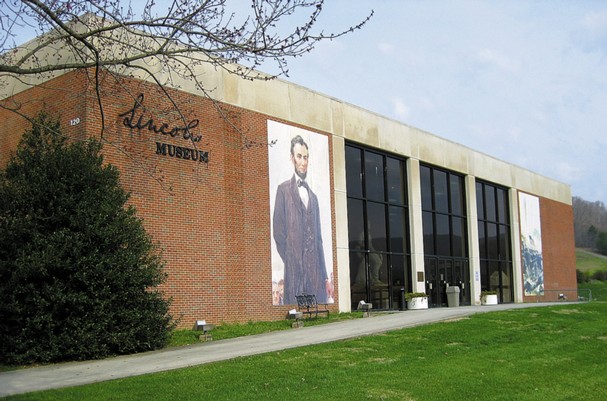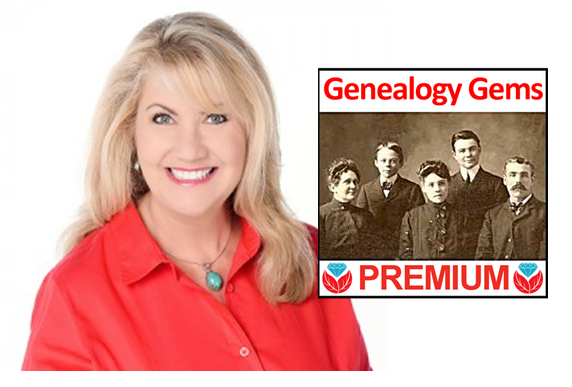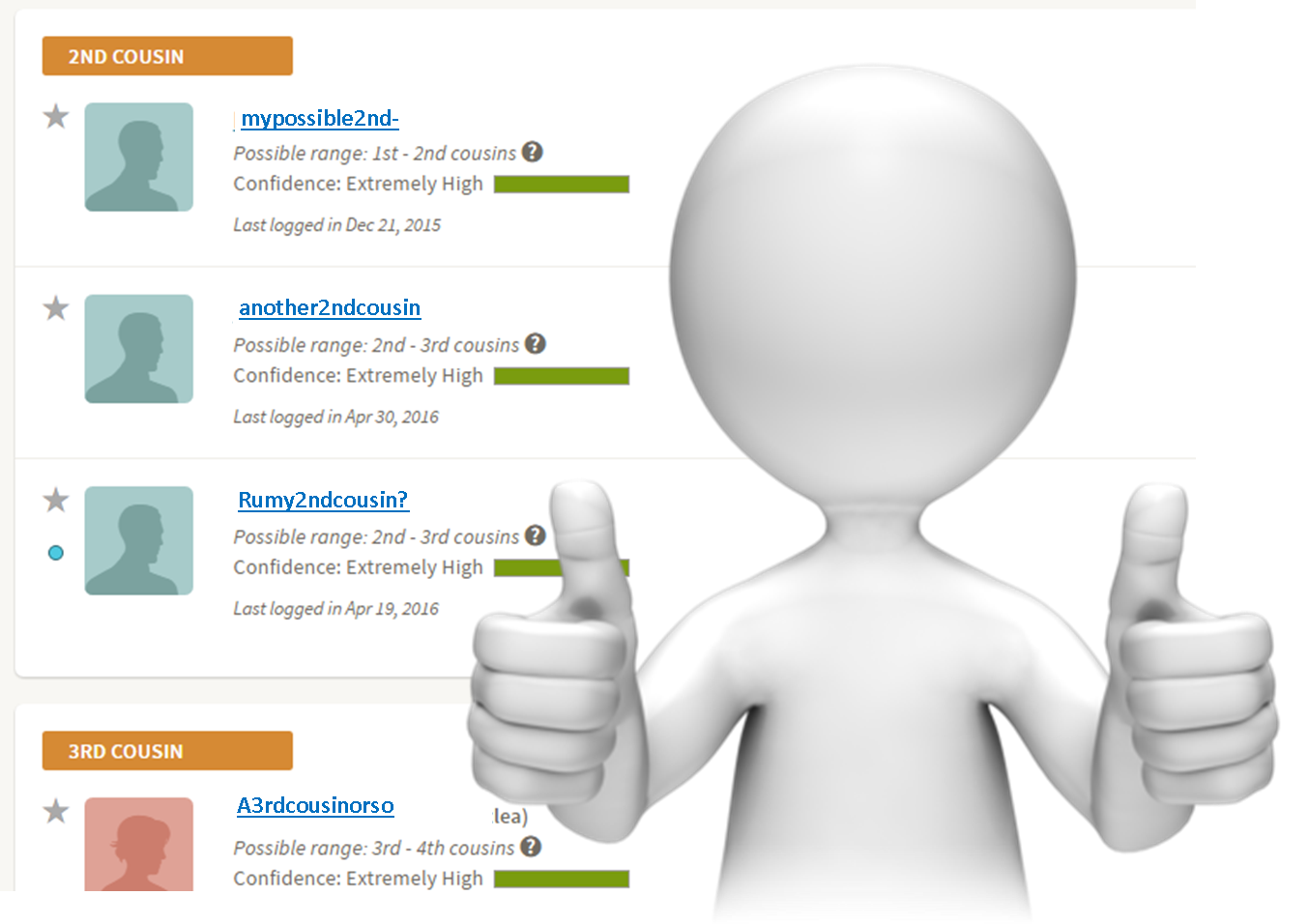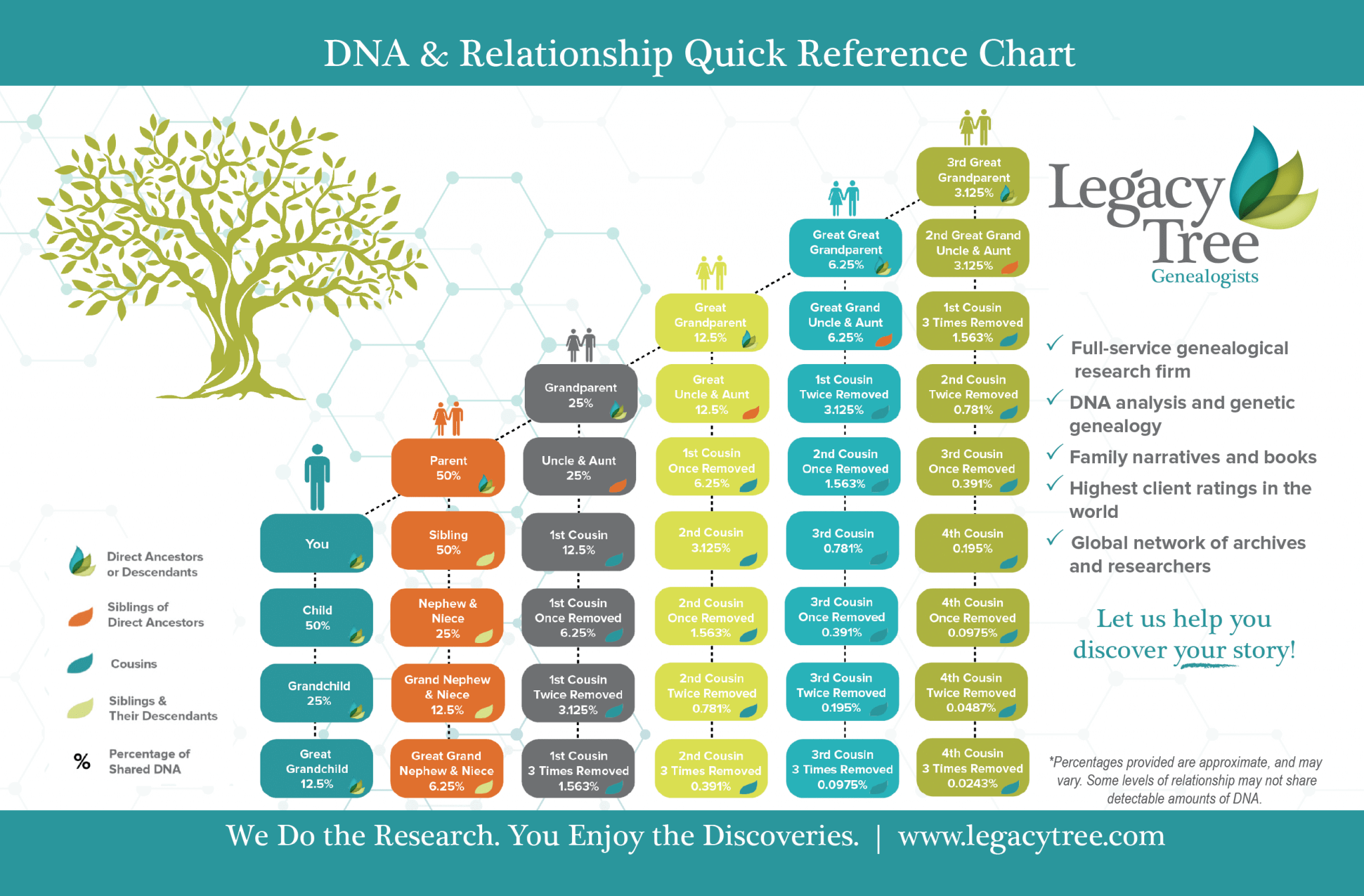Blog


Join Lisa at GeneaQuest 2018 in Illinois
Lisa Louise Cooke will be at CAGGNI’s GeneaQuest 2018 in Hoffman Estates, Illinois on Saturday, June 23. Join her and other expert presenters all day to learn Google strategies for genealogy, a master plan for organizing your research, DNA solutions, brick-wall solutions and more!
The Computer Assisted Genealogy Group of Northern Illinois (CAGGNI) is welcoming Lisa Louise Cooke as a featured speaker at GeneaQuest 2018. This year’s annual event will be held at Northern Illinois University (NIU) Conference Center in Hoffman Estates, Illinois on Saturday, June 23, 2018 from 8:00 am – 4:00 pm.
The theme is Building Your Genealogy Skills, and a genealogy conference is a great place to do just that. In addition to nurturing your skills in the area of analysis, genetics, geography, organization, problem-solving, research and technology, GeneaQuest offers you an opportunity to come shoulder to shoulder with genealogist’s who share your passion for climbing the family tree.
More on GeneaQuest 2018
Who: Lisa Louise Cooke and other expert presenters
What: GeneaQuest 2018
Where: Northern Illinois University Conference Center, Hoffman Estates, IL
When: Saturday, June 23, 2018, 8:00 am – 4:00 pm
Cost: Register online by May 31 for $60 ($55 for CAGGNI members) or $70 after June 1; registration includes buffet lunch (if you register by June 12). Extra fee for labs.
Event Host: Computer Assisted Genealogy Group of Northern Illinois
Lisa will kick off the day with the brush-up-on-Google presentation every genealogist needs, “Update Google! What’s New.” She’ll tell you what you need to know about how Google is evolving and changing. Then she will unleash some advanced Google search strategies for genealogy that you can put into practice right away to get the best results from your online searches.
She will also be teaching these powerful family history classes:
- Create a Free Google Earth Map Collection for Your Research. Come to this session and you’ll walk out with potentially thousands of free historic maps organized for your family history research. And the good news is, you don’t need a lot of tech know-how to do it! You’ll learn how to find free digital maps for your ancestral locations, add them as permanent map overlays to Google Earth and then organize them into your personal map reference collection. Lisa will also cover best practices for keeping them organized so that they continually enrich your research.
- Genealogy On the Go With Mobile Devices. Tablets and smartphones are built for hitting the road and are ideally suited for genealogy due to their sleek size, gorgeous graphics and myriad of apps and tools. In this class, you will discover the top apps and best practices that will make your mobile device a genealogical powerhouse! (iOS and Android.)
- How to Organize All This Genealogy Stuff. Save yourself future frustration and disappointment by putting a solid genealogy organizational plan in place for all the types of items that will be coming your way. Lisa will share with you the systems she personally uses that have proven to be reliable and efficient. She will cover systems for four types of stuff: paper and physical items; digital files; family tree data and all that information you’ve discovered online and need to put somewhere.
Other topics for the day also promise to be fabulous. There will DNA labs for AncestryDNA and GEDmatch, strategies for finding the most elusive ancestors (including DNA strategies), finding female ancestors, and introductory presentations on the free websites, WikiTree and Find A Grave. Click here for a detailed schedule of the day’s event and registration information.
Learn Virtually: Genealogy Gems Premium eLearning
Can’t make it to GeneaQuest 2018? You do have another learning option. Genealogy Gems Premium eLearning gives you access to video versions of Lisa Louise Cooke’s top classes for a full year! Think Google, Google Earth, organizing your genealogy, Evernote, using the cloud for genealogy, mobile research strategies, methodology and more than 20 classes from Your DNA Guide Diahan Southard on getting the most out of your DNA testing. You’ll need that full year to get through more than 50 video classes as well as all episodes of the Genealogy Gems Premium Podcast! Click here to see how Premium eLearning can help you open new doors in your genealogy research.

About the Author: Sunny Morton
Sunny is a Contributing Editor at Lisa Louise Cooke’s Genealogy Gems; her voice is often heard on the Genealogy Gems Podcast and Premium Podcasts. She’s known for her expertise on the world’s biggest family history websites (she’s the author of Genealogy Giants: Comparing the 4 Major Websites); writing personal and family histories (she also wrote Story of My Life: A Workbook for Preserving Your Legacy); and sharing her favorite reads for the Genealogy Gems Book Club.

Why You Should Look for Archives in Museums
Did you know that some museums also house archives? Yes, that’s right! Museums aren’t just for artifacts and historical objects. They sometimes house documents, photographs, and ephemera. Here’s how to learn about archives at your favorite museums (big or small) and how to gain access to archival material that may reveal your family history.
Many genealogists don’t know that many of our wonderful museums have both a “front room” and a “back room.” The front room is filled with displays and exhibits that we all love to walk through and see. There could be multiple rooms filled with artifacts on display in glass cases for the visitor to enjoy. But the back room is where the archived records are located. This back room is not seen by the public but most of the time, it is there. There are shelves filled with historical and genealogical records that the genealogist shouldn’t miss out on.
For instance, at the Lincoln Memorial University Museum in Harrogate, Tennessee, they have the second largest collection of Abraham Lincoln artifacts and memorabilia in the United States in their museum. They also have a back room filled with historical and genealogical records that genealogists can access for genealogy research!
A fantastic find in a museum archive
Genealogy Gems Contributing Editor Sunny Morton shares this example of a family history treasure found buried in a museum’s archive:
“My mom Cheryl McClellan (a professional genealogy librarian who was interviewed by Lisa Louise Cooke in the Genealogy Gems Premium Podcast episode #125), visited the Steelworks Center of the West in Pueblo, Colorado with her siblings to get a better sense of the industry that employed her family there.
Imagine her glee when she discovered that the museum has an archive! According to its website, the collections include ‘over 100,000 photographs, more than 150 films, 30,000 maps and drawings, hundreds of ledgers, and internal publications such as Camp and Plant, The Industrial Bulletin, and The Blast. These are in addition to the core collection of approximately 6,000 cubic feet of records documenting CF&I’s steel production, iron and coal mining, geological records, labor relations, land and water resources, employee records, invoices and work orders, executive memoranda, correspondence, and much more, documenting every aspect of the company’s rich history.’
Unfortunately, my mom didn’t have time to stay and explore the archive in-depth. But she started corresponding with the archivist, who sent her priceless documents relating to her grandfather, John Felix. Among these was a copy of his original application for employment, his employee service record and a clipping from an employee newsletter about his exploits as a fisherman:

Sunny’s Mom: Cheryl McClellan,
Professional Genealogy Librarian
How to find museums with archives
You can look for museums with archives in them in a few different ways:
- When visiting a local museum, ask the curator or museum director if they have any records available for research in their collections.
- Go to the websites of museums–especially historical museums–you may have visited in the past. See whether they mention having an archive or research room.
- Google the name of your ancestor’s town (or a bigger city nearby), along with the state name, and add the search term museum.
- Contact a librarian, archivist, or the Chamber of Commerce in your ancestor’s town.
- Use the free website, ArchiveGrid, to locate archival collections at museums. On the home page, you’ll find a map that looks something like this:
Use the map view to identify archival collections, some of which may be housed in museums, near your ancestors’ home. Hover over the red markers to see the names of institutions. Click on them to find contact information and search their collections. Once you have located the museum, contact them by phone or email and ask them about their archived records. If you can’t visit in person–or you can’t stay long enough to really search their collections–start corresponding with the archivist, as Sunny’s mom did. You may need to be patient: many archivists only work part-time and stay quite busy. But your patience may be rewarded beautifully!
As genealogists, we will search anywhere and everywhere for records about our ancestors to help tell their life story: archives, libraries, historical societies, genealogical societies, and museums! So, the next time you travel to where your ancestors came from, check and see if there is a museum. If there is one, stop by and ask if they have a “back room” with archived records. You just might be pleasantly surprised.
The Archive Lady Melissa Barker appears regularly on the Genealogy Gems Premium Podcast, available to Genealogy Gems Premium eLearning members. Internationally-renowned genealogy educator and podcast pioneer Lisa Louise Cooke hosts and produces the Premium Podcast, weaving together inspiring stories, research strategies and exclusive interviews. (You can also check out the free monthly Genealogy Gems Podcast, with over 2.5 million downloads worldwide and plenty of inspiration and information that can help your family history research.)
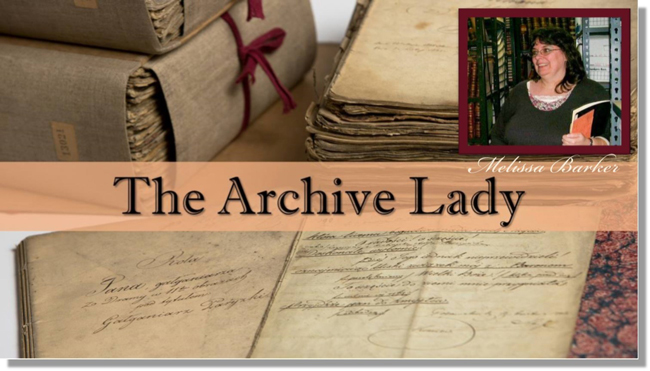
About the Author: Melissa Barker
Melissa is a Certified Archives Records Manager, the Houston County, Tennessee Archivist and author of the popular blog A Genealogist in the Archives and an advice columnist. She has been researching her own family history for the past 27 years.
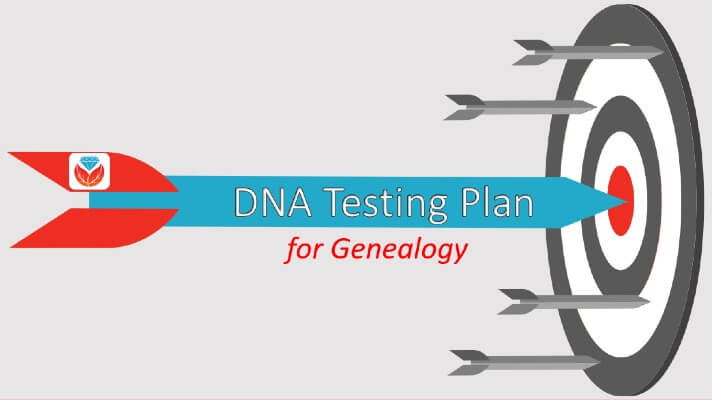
Develop Your DNA Testing Plan for Genealogy
Developing a DNA testing plan can help ensure that your genetic genealogy testing has targeted goals and maximized results. Follow these tips from Legacy Tree Genealogists to create your own DNA testing plan. Already taken a test? It’s not too late to develop a real plan to get the most out of your results.
Your DNA testing plan
You have taken your DNA test, and you have your ethnicity estimate, but how does genetic genealogy testing actually help you with your genealogy? Where do you even begin? By developing a DNA testing plan you can ensure that you pursue your research with a focused goal in mind, which will help determine how best to proceed.
Thank you to Legacy Tree Genealogists for providing us with this guest blog post.
Moving beyond ethnicity estimates
Even though ethnicity estimates get a great deal of attention, the most genealogically valuable element of your DNA test results is the match list which connects you to others based on your shared DNA inheritance. As you begin working with your DNA test results within the context of your genealogy, we recommend sharing and collaborating with your genetic cousins. The main goal of your correspondence with genetic cousins might be to determine the nature of your relationship, but could also include sharing information regarding your shared heritage and ancestors, or requesting their help in recruiting additional relatives to test.
However, your match list may sometimes present problems of its own. If it includes several thousand individuals it might seem overwhelming. If you only have a handful of matches, it might be discouraging. In either case, there is no need to worry. Genetic genealogy tests are constantly changing as more people test. If you have too many matches, just focus on the closest ones. If you don’t have enough, the genetic cousins you need to make genealogical breakthroughs may not have tested yet. Waiting for the right cousins to test need not be a passive pursuit. Consider target testing your known relatives (or the known relatives of your matches) to better achieve your research goals.
Creating a DNA testing plan
In order to create a robust testing plan, you first need to have a specific research subject and a clear objective. Focus on a single ancestor. Make a goal of what you hope to discover through DNA testing. DNA testing is ideal for addressing questions regarding kinship, but is not as good for exploring motivations, biographical detail or uncovering ancestral stories. Once you have a research subject and objective, then you can evaluate which relatives will be the best candidates to test to thoroughly address your research problem.
In this post we will create an example DNA testing plan for John Martin who was adopted by a shopkeeper and his wife in the mid-1800s. We have few clues as to who his biological parents may have been. Our research subject is John Martin, and our stated objective is to determine the identities of his biological parents.
Understanding shared DNA
Because of the unique inheritance pattern of autosomal DNA, testing multiple relatives of a specific research subject can be extremely beneficial. Each individual inherits half of their autosomal DNA from each of their parents. Beyond that, the amount of DNA shared in common is only approximate due to a random process – called recombination – which shuffles the DNA each generation. Each individual will inherit about 25% from each grandparent, 12.5% from each great-grandparent and approximately half the previous amount for each subsequent generation. Although two first cousins will have both inherited 25% of their DNA from each of their common grandparents (50% in total) they will have inherited a different 25%. Therefore, first cousins will typically only share about 12.5% of their DNA in common. Because descendants along distinct lines inherit different portions of their common ancestors’ DNA, it is important to test as many people from distinct family lines as possible.
Tip: Right click and ‘Save Image’ to your computer, then print this free, quick reference chart:
Don’t overlook the importance of traditional genealogy research!
Since it can be extremely beneficial to test multiple descendants of a research subject, before pursuing a detailed testing plan we recommend documenting as many descendants of an ancestor of interest as possible through traditional research. Though this process can be time consuming, it is often worth the effort. By tracing all descendants, you can accurately evaluate which genetic cousins will be best to invite to perform DNA testing. Additionally, tracing the descendants of ancestors can frequently lead to additional clues for extending ancestry. Just as different descendants inherit different DNA, they also inherit different information and historical documents regarding their ancestors. Some of that information could include clues regarding the very relationships you are trying to clarify. While searching for descendants of your ancestor of interest, consider utilizing compiled family histories, obituaries, city directories, family organizations and public records to identify living descendants.
In tracing the descendants of John Martin, we found that he had three children who lived to adulthood. We traced each of their descendants through traditional research and identified 10 living relatives (shown in gray, below). Now that we know the identities of all his living descendants we can prioritize which relatives to test.
Who you decide to test as part of your research problem can be considered within the context of coverage. Coverage is the amount of an ancestor’s DNA that is represented in a DNA among all of their tested descendants. Coverage can be estimated by determining the amount of DNA that one descendant shares with a common ancestor, plus the DNA that another descendant shares with that same ancestor, minus the DNA that both descendants share in common with that ancestor. When two full siblings perform DNA testing, they obtain a coverage of about 75% of their parents’ DNA. Testing three full siblings results in about 87.5% coverage of their parents’ DNA.
Prioritize testing to achieve the highest level of coverage
To achieve the highest coverage of a research subject’s DNA, prioritize testing the closest generational descendants. A living granddaughter of a research subject will have inherited much more DNA from the ancestor of interest than a second great grandson. You can often find the closest generational descendants of a research subject by searching for the youngest child of the youngest child of each generation of their descendants. These individuals will typically have the longest generation times, and therefore have a greater likelihood of having close living descendants.
Keep in mind that any DNA inherited from a common ancestor has to come through an individual’s immediate ancestors. If a granddaughter of a research subject is still living, and she in turn has descendants, any of the DNA that her children or grandchildren inherited from the research subject had to have come through her, and will be a subset of her own DNA. Therefore, if the granddaughter is tested, there is no need to test her descendants as well within the context of the research objective.
For example, in the case of John Martin, his granddaughter Maria is the closest living generational descendant. She will share much more DNA with John Martin than any of his other descendants. Also, any DNA that Maria’s descendants (Jennifer Jones or Matthew Williams) inherited from John Martin would be a subset of the DNA that Maria inherited from John. Therefore, if we were able to test Maria, we would not need to test Jennifer or Matthew.
Also, to achieve the highest coverage of DNA, we recommend testing descendants from unique lines. If a research subject had three children who lived to adulthood, rather than testing descendants of a single child consider testing descendants from each of the children. Testing only descendants of a single child limits the maximum coverage we can achieve, while testing descendants from each line enables maximum coverage. In this case, testing Maria, George, and Isaac or Julia would result in slightly higher coverage than testing Maria, Isaac, and Julia.
Other benefits of creating a DNA testing plan
So far, our discussion on testing plans has focused on the descendants of a research subject. However, it can also be beneficial to test other individuals as part of a research plan. Testing known relatives from other family lines can help to filter DNA test results. Any matches shared between a test subject and a known relative can be assigned to that side of the family. If there are proposed candidates who might be among the ancestors of the research subject, their descendants might be tested to prove or disprove hypotheses regarding their relationship. If, after testing, there are still very few genetic cousins, consider collaborating with those cousins to test their older relatives or representative family members from their various ancestral lines.
In this case, it has been proposed that John Martin was the son of a woman named Jessie Brown. Traditional research revealed that Jessie Brown had other living descendants who might be tested. Their test results could be used to confirm or refute the hypothesis of John’s relationship to Jessie. If their results confirm John and Jessie’s relationship, they could also be used to isolate which genetic cousins of the descendants of John Martin are likely related through the ancestry of John’s father. Finally, testing close known relatives from the other ancestral lines of each testing candidate could help to filter which genetic cousins are related through the ancestry of John Martin.
Since most researchers work within a limited research budget, developing a DNA testing plan can help prioritize which DNA test(s) should be performed first, and can help maximize the chances of successful resolution of research problems. Choose a research subject, define a clear objective, research their living descendants, prioritize DNA testing, and maximize your chances for genealogical discovery.
Creating a DNA testing plan can mean the difference between DNA results that solve genealogy mysteries and a few less-meaningful slices of ethnicity pie chart. It takes a bit of extra time, but it’s worth it.



